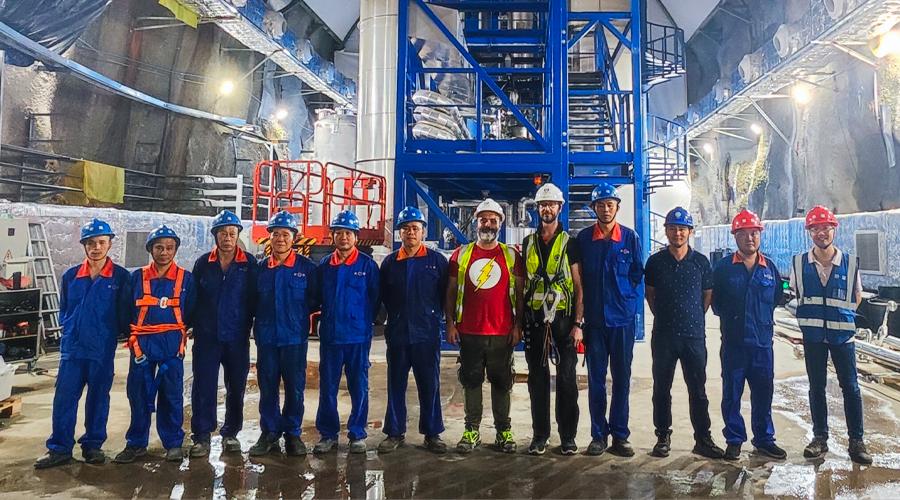 Building a gigantic underground experiment for the detection of neutrinos in southern China: this is the goal of the JUNO Jiangmen Underground Neutrino Observatory collaboration, to which INFN has provided essential technological and scientific contributions for over nine years. In particular, the INFN researchers have designed, built and recently installed two large plants for the optical and radioactive purification of the experiment's scintillator, that is the 20,000 tons of liquid that will make up the heart of JUNO and that will allow the revelation of neutrinos.
Building a gigantic underground experiment for the detection of neutrinos in southern China: this is the goal of the JUNO Jiangmen Underground Neutrino Observatory collaboration, to which INFN has provided essential technological and scientific contributions for over nine years. In particular, the INFN researchers have designed, built and recently installed two large plants for the optical and radioactive purification of the experiment's scintillator, that is the 20,000 tons of liquid that will make up the heart of JUNO and that will allow the revelation of neutrinos.
Currently, the JUNO collaboration is proceeding at full speed with the construction of the detector, and the INFN group has recently completed the first phase of the installation of the two large scintillator purification systems, built in collaboration with the Italian company Polaris. The purpose of these plants is the optical and radioactive purification of linear alkylbenzene (LAB), the liquid used by the experiment as a scintillator, by means of two techniques widely used and optimized in the context of the Borexino experiment, which operated for over ten years at the INFN Gran Sasso National Laboratories and obtained fundamental results on the processes that make stars, like our Sun, shine through the study of neutrinos. The first of the plants just installed at JUNO uses the technique of partial vacuum distillation to remove optical impurities and heavy radioactive contaminants; the second one deals, instead, with the removal of radioactive gases commonly present in the atmosphere, through a technique called "steam stripping".
The two devices, shipped to the JUNO site in the second half of 2020, were installed only recently due to the restrictions related to the pandemic, through difficult assembly operations lasting over 5 weeks.
"It was absolutely necessary to complete this part of our activity in order not to block other underground installations connected with our plants," say Paolo Lombardi and Michele Montuschi, researchers from the INFN Sections of Milan and Ferrara, who led the complex assembly work. “The success of the operations was possible thanks to the precision of the preparatory work. Before going to China, we had planned all aspects of the installations to be carried out”.
"Thanks to the successful completion of the first stage of the installation of the systems, our preparatory activities for the purification of the scintillator remain perfectly in line with the time schedule of JUNO construction, despite the delays linked to the pandemic", add Fabio Mantovani, head of the JUNO group in Ferrara, and Gioacchino Ranucci, head of the Milan group, of the national group and international deputy manager of JUNO.
The JUNO experiment will measure artificial antineutrinos from a complex of nuclear reactors located 53 km away to study the so-called "neutrino oscillations", the phenomenon whereby these elusive particles, present in nature in three different types, mutate from a type to another. Specifically, JUNO will investigate their mass hierarchy, that is, the order in which the masses of the three types of neutrinos are arranged. The experiment will also observe a variety of neutrinos of natural origin, which include solar, atmospheric, terrestrial, supernova neutrinos, generating an in-depth and articulated line of investigation in the field of astroparticle physics.
To achieve these objectives, JUNO will use 20,000 tons of very pure liquid scintillator with low environmental contamination and more than 40,000 photomultipliers, which will allow to detect the light produced by neutrinos when they interact with the scintillator. This is the same technology used with great success by the Borexino experiment, which has just ended its activity at the INFN Gran Sasso National Laboratories. Thanks to the long and fruitful experience accumulated over three decades at Gran Sasso National Laboratories in the study of neutrinos, INFN technological and scientific contributions are absolutely essential for the success of the JUNO experiment.






